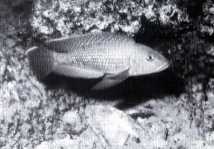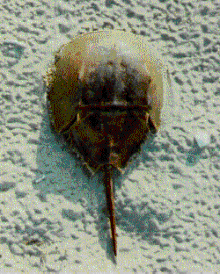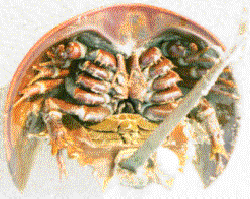

Like polyandrous females, there are a variety of ways in which males practice polygyny. There is a single widely accepted theory as to why these different methods of polygyny have evolved: Stephen Emlen and Lewis Oring have argued that the extent to which a male can monopolize mating opportunities depends on social and ecological factors that affect the distribution of females (Emlen 354). Females that live together or aggregate at resource patches can be monopolized economically by males, whereas scattered females cannot, because as the size of a territory grows, the cost of defending a site increases (Alcock 501).
The Emlen-Oring theory postulates that when females aggregate, males will compete amongst each other for the right to mate with this cluster. This theory is supported by observations made of sheep, gorillas, lizards, and bats.
The benefits of female defense polygyny are clear for both sexes. Males receive most of possible copulations in a cluster they successfully protect, and females gain protection for themselves and their offspring from predators (McCracken and Bradbury 811-813). Females in these clusters will often remain there well after the offspring are born, providing care for dependent young.
In some species, males create clusters of females by herding them together. This strategy is used by marine amphipods that live in shallow bays. The male will leave his "house" and search out single females. He will then glue their houses to his own. The male will do this to 2-3 females, and then monopolize their sexual activity from that point forward.


(A) The male marine amphipod alone, outside of his house, and (B) in his house clustered with two other females (Alcock 502).
Females of many species do not live in tight clusters, but a male may still be able to defend a territory that makes him polygynous if the resources females need are clumped spatially, permitting economical defense of a resource based territory (Alcock 504). A safe location for eggs to mature is a defendable resource for a host of animal species. For example, the female African cichlid fish, Lamprologus callipterus, will deposit eggs in an empty snail shell, then follows them inside to guard them until they are ready to leave. The male will scavenge for extra shells, add them to his midden of shells, and defend his area. A male with a large, well protected midden will enjoy great reproductive success.

Lamprologus callipterus, the African cichlid fish, demonstrates that egg deposition location is a defendable resource used frequently by polygynous males to secure a cluster of females. (Alcock 505). View the Cichlid Research Homepage.
The polygyny threshold model identifies circumstances in which a female will gain more by mating with an already mated male than with a bachelor. This model applies to species in which the territory of a male contains useful resources for the female and her offspring. A female is more apt to pair with a mated male with great resources than a single male with a poor territory. It appears the female's share of the resources will be greater with the mated male despite having to share him with many other females, thus increasing her reproductive success (Orians 264).
In many species, females are widely dispersed and it is very costly for males to attempt to guard individual territories. When this scenario presents itself, males will attempt to outrace each other to potential mates. Males that are successful practice scramble competition polygyny. Thus mating success in males practicing scramble competition polygyny is reserved for those that are the most persistent, durable, and perceptive, rather than the most aggressive and physically imposing.
A very different type of scramble competition polygyny occurs in species in which the female's breeding season is highly compressed. The female horseshoe crab comes to shore to lay eggs on certain nights when the tide conditions are favorable. Males will gather off the nesting beaches in large numbers and search out incoming females. When a male encounters a single female, he will attach to her with special claws and fertilize her eggs as she lays them onshore. It appears these claws are highly specialized; they make the male difficult to dislodge and put him in an optimal position to fertilize the female's eggs.


A horseshoe crab moving up a beach and the underside of a male horseshoe crab. The front claws (which appear to be hanging down from the top of the shell) are larger and slightly structurally different than the female's for use during mating. Photos courtesy The Assateague Naturalist.
Sometimes males will defend territories too small for there to be useful resources for a female to utilize. As a result, males will cluster in a small area for display. Females come to these display areas, leks, to mate. After copulation females often depart the lek and never return. Often a very small percentage of males will monopolize a large number of sexual acts occurring in the lek. Why do subdominant males aggregate in leks if there is a high probability that they will not increase their chance at copulation? It is argued that males aggregate in leks only after other mating systems have not paid off as a result of wide and even dispersion of females. Why do males choose to display so close to one another rather than in their own isolated territories? There are three theories that purport to explain this:

Lek size and copulation rates for the lekking sandpiper. A) Males at larger leks attract more receptive females than those at small leks, B) At leks of six or more males, the number of attracted females levels off, lowering the reproductive success of dominant males because of competition from lower-ranking males. (Alcock 516).
The following description of a prairie chicken lek is by Jim Metzner as part of the radio program "Pulse of the Planet." The lek he describes is approximately the size of a football field and contains about 20 males.